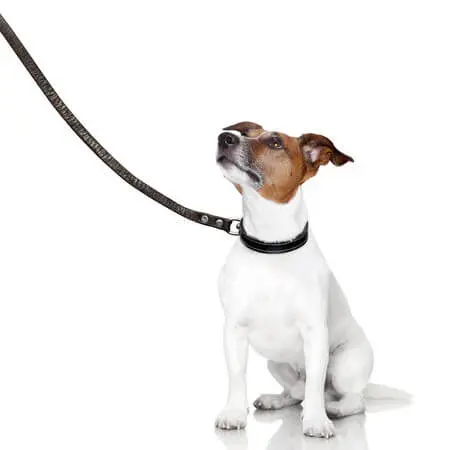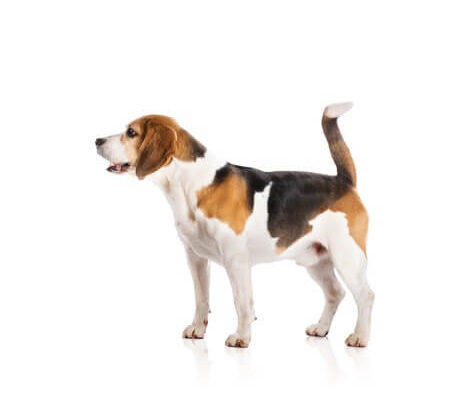Dog Collars | Best Canine Collar Types

Dog Collars and Leads – Choosing Best Collar
There are many types of dog leads and collars on the market and it is trial and error to find the right one to suit you and your dog. You may find you will need a particular type of lead for different activities and training. Training your dog to walk well and to heel on the lead is a lot harder than it sounds. Many of you may have already found out!

The slip lead is a collar and lead in one. The slip loop goes over your dog’s head and should have a stopper to keep it in place. They are made in a variety of products, but usually rope or leather. It is best to get a fairly thick lead for your dog’s comfort. These leads are particularly favoured by the gun dog owner and those who live in rural locations for it’s ease of use, quickly put on and off for off lead exercise or working.
It is not recommended for dogs that pull hard or for long distance walking with your dog. There is a right and wrong way to use a slip lead and the ring and leather toggle on the lead should be facing downward on the side you are walking your dog on, i.e. towards you on your right if you are walking your dog on your right. The slip lead should be placed above your dog’s collar and high up under his jaw so the lead does not get too tight and damage your dog’s neck or throat. Keeping it the right way will allow the lead to slacken off when not pulled and the dog is walking nicely to heel.
Retractable Lead with Collars
The retractable / extendable lead is a lead made up of cord or tape wound on to a spring loaded device within a plastic handle. It will extend or retract as your dog walks away and towards you and it is controlled by a button on the handle which acts as a lock to determine how much lead you want extended. Dog walkers like this product as it can give the dog more freedom to wander and sniff without being off lead. It can also be useful for countryside walks where there are cows and sheep grazing to keep your dog close without too much restriction. However, there are drawbacks to this type of lead :
Six Top Tips On Choosing Dog Collars – Best Choice
a) You do not have so much control over your dog. The lead should be locked when walking by a road. You should never let your dog extend too far when walking by the road. Given the opportunity he could run into the road into traffic. It also gives him the opportunity to jump up at passers-by or pull towards other dogs.
b) When extended it is easy to get tangled in bushes and around other dog walkers when two excited dogs meet!
c) The cord could snap, especially if you have a strong dog who suddenly lunges forward in full throttle after something interesting. The cord or tape in these products does get worn over time and more susceptible to breaking, so you should replace this item regularly.
d) Your dog gets used to pulling forward to gain extra ground. This can make traditional lead training more difficult to achieve.
e) When approaching other dogs, your dog pulling at the end of the retractable lead may give out the wrong signal as a sign of aggression and lead to confrontation.
f) The handle is big and bulky and may be dropped or pulled from your hand. Especially if you have other items to hold. If your dog lunges forward quickly it can also badly jolt your arm and if you have a particularly strong dog, could pull you over.
The flat lead is a traditional lead of up to 6 feet long. They can be adjustable in length and clip on to a traditional collar or harness. Some leads have a shock absorbing ability by stretching slightly if your dog lunges forward.

Harness Dog Collar Type
The harness is said by some to be the best item to use if your dog pulls on the lead, but many trainers will disagree and will not recommend it. Their argument is that if you want a dog to pull a sledge, then put on a harness. The strongest part of the dog is its chest and that is where the strength to pull comes from. Using a harness is therefore encouraging your dog to pull and is little use in training against it.
However, that said, many dog owners find that the harness is more comfortable for them to keep their dog in check and have to control without injuring the neck of the dog. Many dogs do not like wearing the harness as some products will chaff around the legs. If you do decide to use the harness, make sure it is a style that is well padded for comfort.
Traditional Canine Collar Types
Traditional dog collars are probably the best option. A good leather collar with a buckle is hard wearing and safest. Try to avoid collars that have the plastic clip action as these can sometimes fail.
Never use evasive collars that are designed to inflict pain when the dog pulls, such as the electric collars. These give strong pulsation jolts or even electric shocks, choke or prong collar. These collars are horrific, unkind and can cause all kind of emotional and physical injury. The prong collar has spikes that will puncture the dog’s skin when pulled tight. Over time this can create scar tissue that has no feeling so the dog eventually does not react to it. It can also help create dogs displaying extreme anxiety and aggressive behaviour.
Always measure your dog’s neck before purchasing a collar, which should be big enough to fit two fingers underneath. Not too tight or too loose to slip over the dog’s head.






